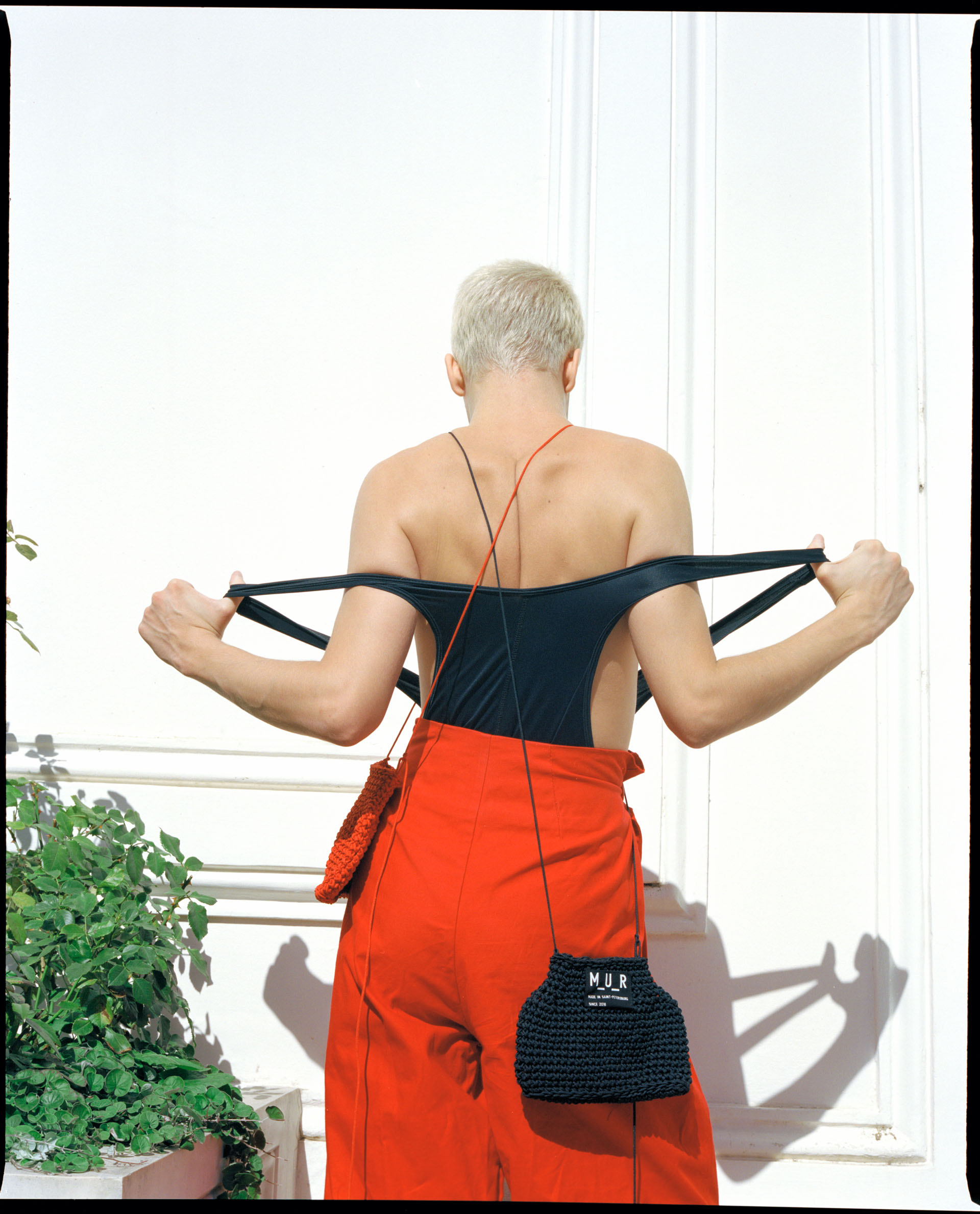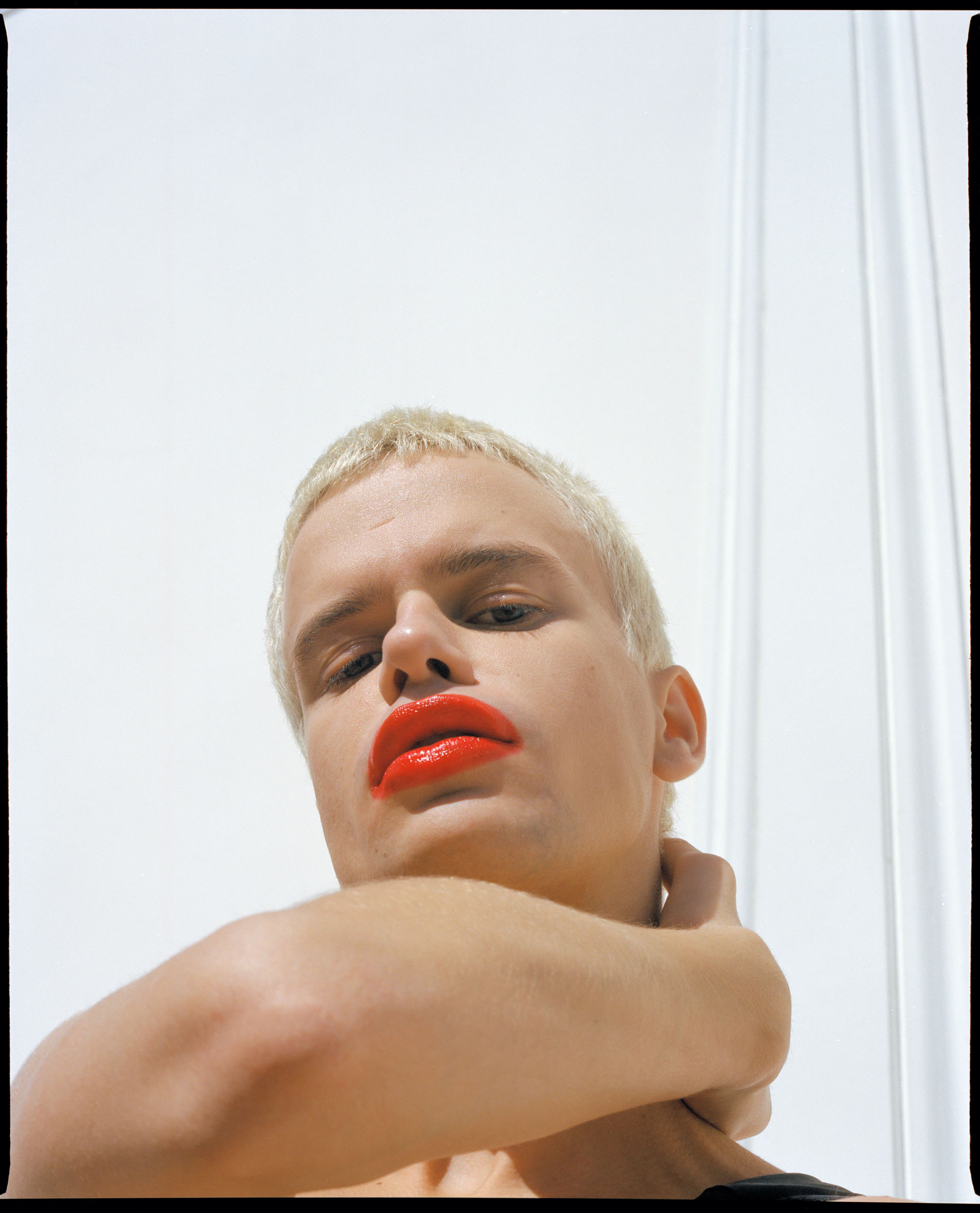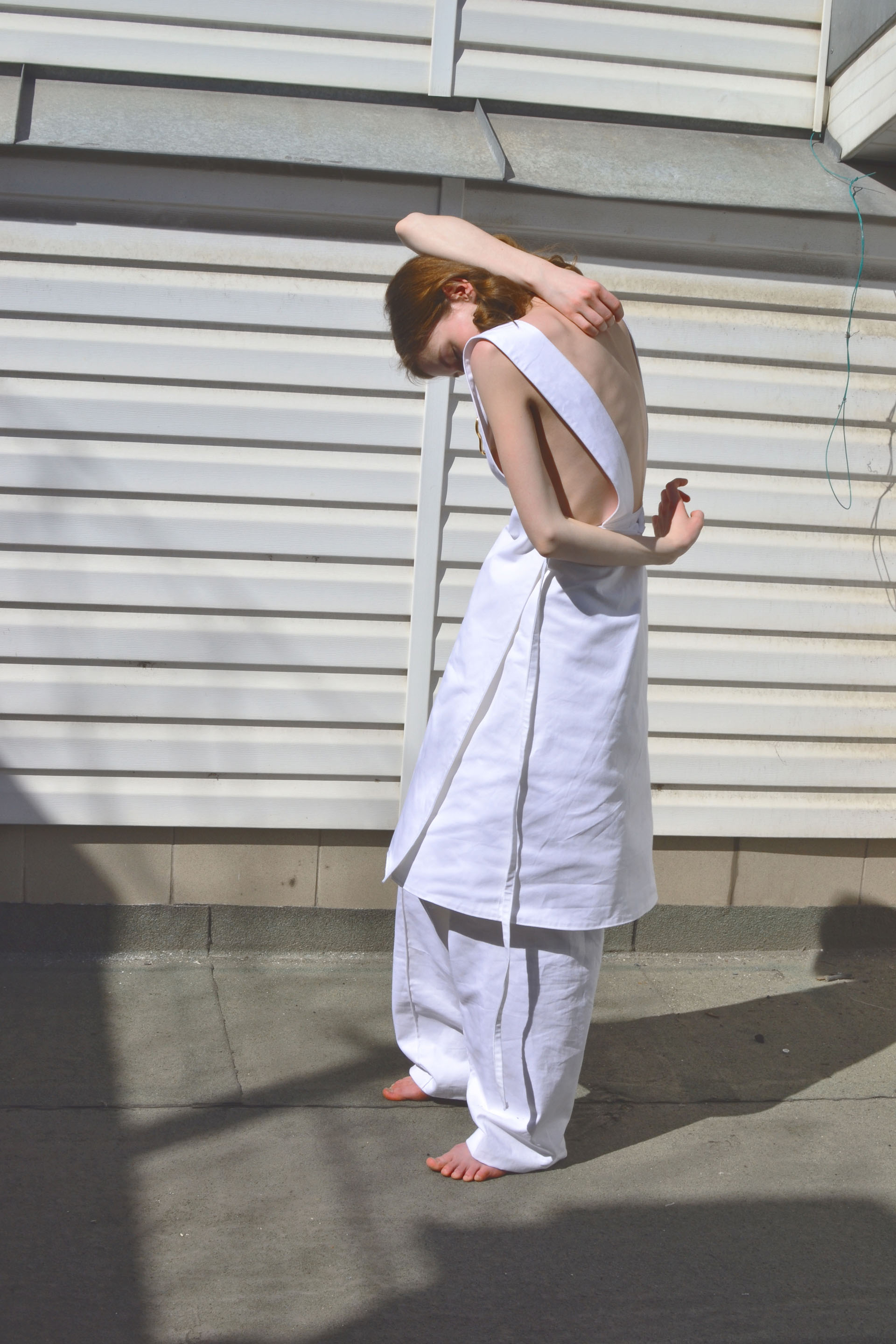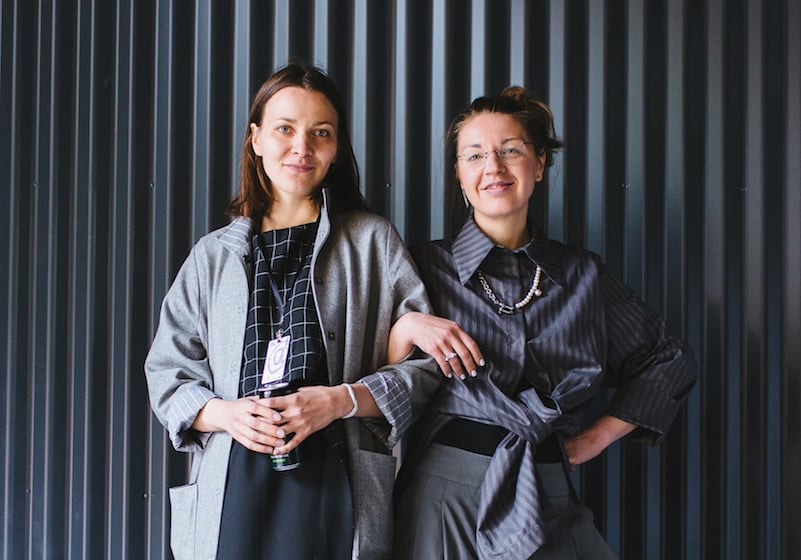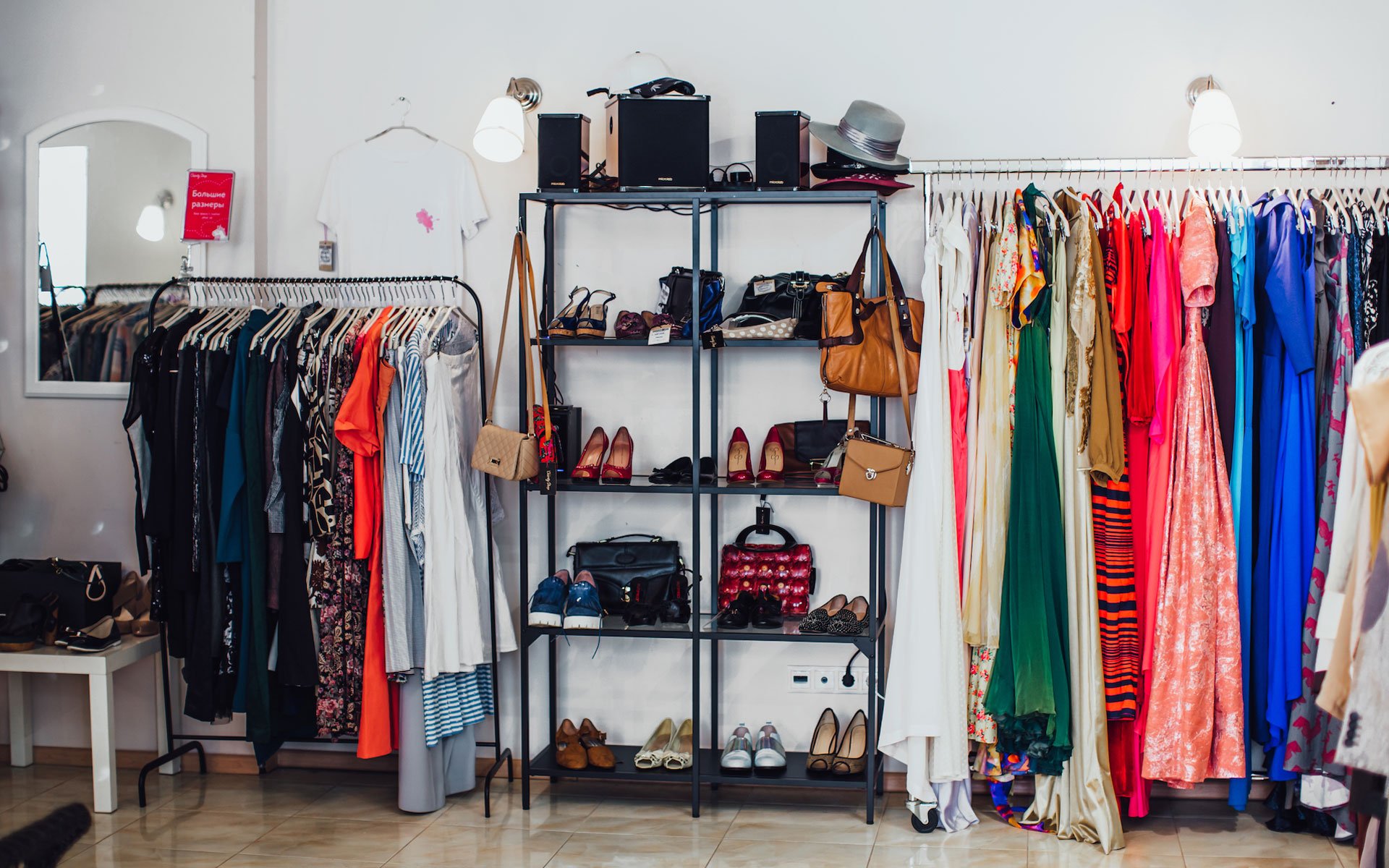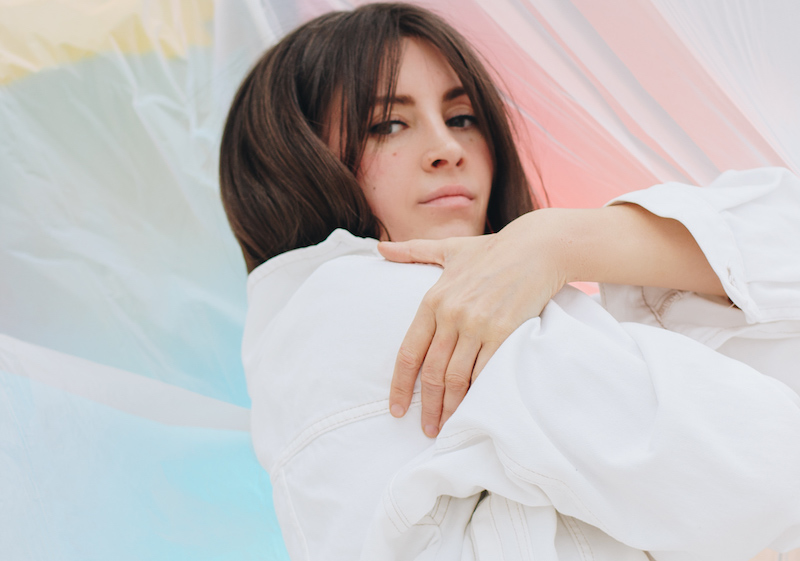This Russian label is making adjustable agender clothing to fight fast fashion
Everything made by St Petersburg-based brand MUR comes in one size, but straps and ties mean that they can be adjusted to any body. Anna Druzhinina tells us how she founded her sustainable fashion label on a budget.
Fashion is driven by aesthetics, ideas, and personality, so when a new fashion label blows up, we judge it by these parameters. Rarely do we see the work it takes to start your own brand. Success in fashion is down to a combination of a creative vision and a business strategy. For designers working in emerging markets, such as Eastern Europe, the latter is much harder to decipher.
But constraints and limitations can also help one’s creativity blossom. St Petersburg-based label MUR is all about making the best of the resources available at hand, and rethinking clothing standards such as gender and sizing — for a more sustainable approach.
MUR garments are made to be worn. This is obvious from the feel and fit of the garments from my visit to their two-room studio in central St Petersburg, which MUR shares with furniture designer Alexander Kanygin.
Jackets and trousers made from thick cotton in red, black and pale blue, black sheer handwoven silk, subtle ruffles, and soft knits — MUR’s garments are both minimal and playful, easily adaptable to one’s personal style, and could be cherished for years to come. Moreover they are made to be totally adjustable: garments are produced in one size with straps and ties that can be altered to fit one’s figure.
“All MUR collections are one size, one colour, and gender fluid”, says designer Anna Druzhinina. “When you start a small brand with your own money, you don’t have the resources to buy a whole lot of fabrics nor produce garments in different sizes. We also wanted something that would reflect the changing demands of a contemporary wardrobe, with more people willing to wear garments made for men and women or eschew gender altogether. MUR clothes can be altered, be made to suit anyone whether you are smaller or bigger, taller and shorter. People of different shapes can wear our garments, and they look different on everyone.”
With a background in architecture and interior design, Anna Druzhinina started MUR two years ago, following an interest in clothes she’s had since childhood. She produced the first two collections together with a friend who’s worked in costume design for feature films.
They quickly discovered that starting a fashion label in Russia is a precarious pursuit, and this gets in the way of everything from sourcing fabrics to shipping.
“The only time fabrics are produced in large quantities in Russia are for practical purposes: work uniforms for firemen and the military and bedding. Judging by the textile industry, Russia is a country that cooks, goes to war, extinguishes fires, and cures people. From the start we decided to only use natural fabrics, like cotton and linen, and find a new use for these standard and unloved functional materials,” the designer recalls.
Druzhinina tells me that small labels often don’t have the resources to purchase fabrics produced in Europe, and even when they do, they usually end up with what was made for bigger fashion manufacturers. Besides the high cost of these fabrics, the bigger issue is that what’s left only lasts a season. There are surprising benefits to using seemingly unfashionable textiles reserved for uniform and bedding: they are produced continuously in large quantities and therefore always available.
“Fashion works on a biannual cycle where garments become outdated every six months, sometimes a year. But in reality you don’t need to throw away your clothes or shop for a whole new wardrobe. Every wardrobe is a combination of old and new which is continuously updated throughout your lifetime. We can be doing more to challenge fast fashion.”
MUR garments are produced locally in small factories, ateliers, and their St Petersburg studio. From the start, Druzhinina wanted to support small manufacturers. Her search for unique materials and technologies, however, has taken her further than she ever envisaged.
One of the more unusual fabrics Druzhinina uses is a soft, semi-transparent silk hand-woven at a factory in Uzbekistan’s Fergana valley. “I am always excited to see the process that goes into making and dying the fabrics. Supporting the people who preserve this unique craft in such a remote place is a wonderful opportunity,” she says.
Druzhinina’s designs have universal appeal yet subtly hint at Russia’s cultural heritage: this is most apparent in the sturdy work uniform, the floral fabric that brings to mind Soviet housecoats, and the dress made entirely from pleated ribbons which every girl growing up in late Soviet years used to wear in her hair.
“I am very inspired by the memories of my childhood in the Soviet Union, at least the short part I lived through.” She muses on the objects that come to mind from this time: “The aprons and school uniforms; jackets and trousers made from thick cotton which my grandmother used to wear at her factory job; voluminous hair bows and hand-knitted hats.”
These references won’t be obvious to those who don’t share the designer’s background, but they also don’t define the garments. The message Druzhinina sends with her work for MUR is much bigger. It’s about appreciating one’s background in a deeper way than just the aesthetics, by using local resources, supporting local producers, and cherishing the possibilities your time and place offers. Although small in size, MUR certainly sets an example for emerging labels worldwide.
